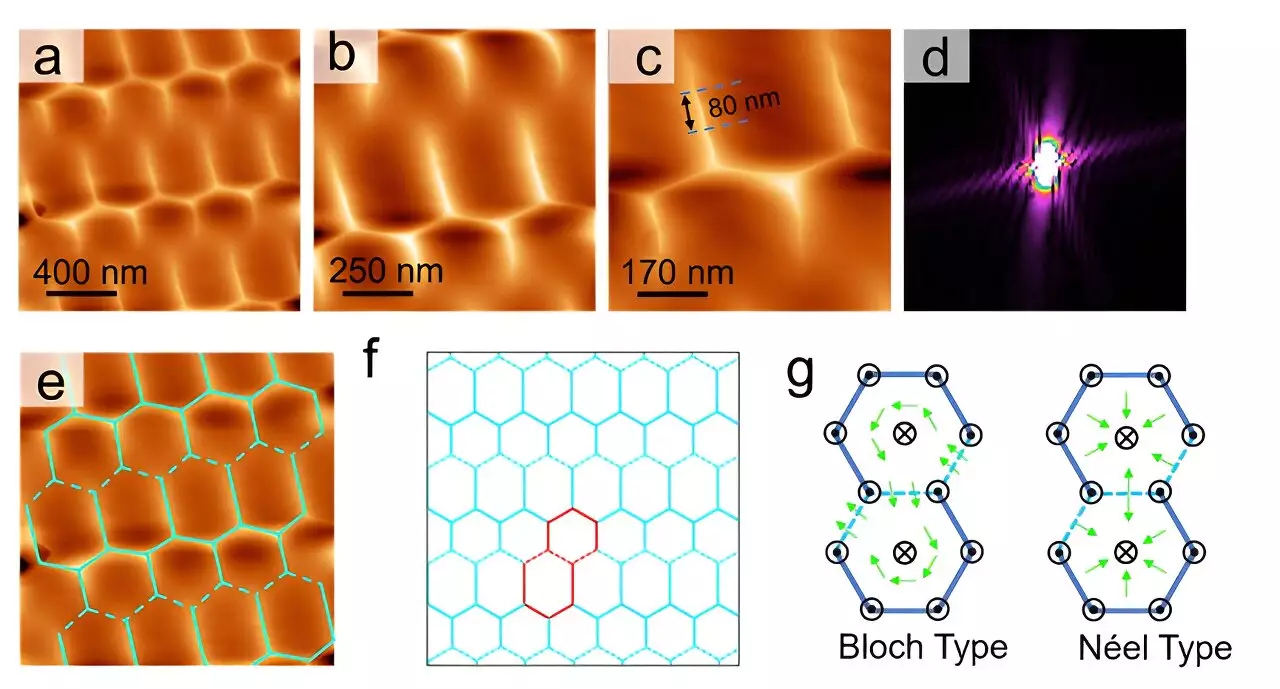Kagome lattices have emerged as a focal point in condensed matter physics due to their unique electronic properties and potential applications in advanced technologies. Structurally distinct, these lattices enable intriguing phenomena like topological magnetism, leading to revolutionary applications in high-temperature superconductivity and quantum information systems. Recent research led by a collaborative team from China has unveiled the first observations of intrinsic magnetic configurations within a kagome structure, specifically Fe3Sn2. This research not only clarifies existing theories but also broadens our understanding of how spatial configurations influence electronic behavior.
The groundbreaking study published in “Advanced Science” on August 19 utilized an advanced ensemble of techniques including magnetic force microscopy, electron paramagnetic resonance spectroscopy, and meticulous micromagnetic simulations. The research, spearheaded by Prof. Lu Qingyou of the Hefei Institutes of Physical Science, illuminates the intricate dance between electron interactions and the lattice framework. The findings highlight that magnetic structures are not merely a byproduct of conventional properties but are inherently tied to the lattice configuration itself. The team’s multidisciplinary approach was crucial in unearthing the latent characteristics of the kagome lattice.
One of the most striking contributions of this study is the discovery of a unique magnetic arrangement within the binary kagome Fe3Sn2 crystal. Researchers found that this arrangement resulted in a broken hexagonal symmetry, attributed to competing forces of hexagonal lattice characteristics and uniaxial magnetic anisotropy. This revelation is paramount as it challenges preconceived notions about the expected magnetic properties of kagome lattices and suggests a deeper complexity inherent in their configurations.
Variable-temperature experiments yielded unexpectedly significant findings, indicating that magnetic transitions in the kagome structure occur through a second-order or a weak first-order phase transition rather than the anticipated first-order transition. This was further corroborated through Hall transport measurements that highlighted the emergence of topologically broken spin configurations. The revised understanding of the magnetic ground state in Fe3Sn2 as an in-plane ferromagnetic state poses critical implications, contradicting prior assumptions of a spin-glass phase.
The team’s meticulous work culminated in the development of a new magnetic phase diagram for Fe3Sn2, providing a comprehensive framework for interpreting magnetic behaviors within such lattices. Additionally, quantitative data gathered from magnetic force microscopy indicated persistent out-of-plane magnetic components even at reduced temperatures. By employing the Kane-Mele model, the research team elucidated the mechanism behind the opening of the Dirac gap at low temperatures, effectively dispelling existing ideas about skyrmion formation under similar conditions.
This pioneering study lays foundational groundwork for future explorations into topological magnetic structures, suggesting promising avenues for innovation in quantum computing and high-temperature superconductivity applications. By enhancing our understanding of kagome lattices, researchers can now better harness these materials’ unique properties, potentially ushering in a new era of technological advancement and scientific inquiry.


Leave a Reply